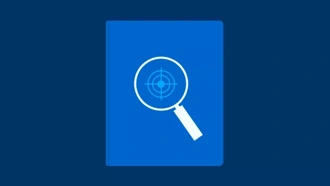What are the benefits of using Bynder for marketing asset management?
Improves productivity and performance
Quite simply, if people can find and use the right marketing materials easily and quickly, they’ll have more time to spend on their work, and there will be less risk of error. Marketing asset management helps build a working environment where collaboration is easier and more pleasurable, which improves performance, and encourages creativity. If you reduce the need for unnecessary tasks and make it more fun for your teams to work together you should have a more productive and fulfilled workforce.
Saves time and streamlines processes
Having an effective marketing asset management system in place helps save time sourcing and using materials, and makes quality checks quicker, easier, and more accurate. You’re also less likely to duplicate work and waste time as your audit and search processes will be more organized and refined. Putting good digital asset management marketing processes in place also helps streamline workflows with external agencies and clients and reduces the risk of valuable marketing assets going missing.
Helps protect branding and company image
Marketing asset management gives you full control over what people see and what they don’t. For example, you won’t risk using an out-dated sales sheet, an old logo, or an incorrectly branded promotional campaign, which can be really embarrassing for your sales teams and potentially damage your brand reputation and customer loyalty. Your internal team and suppliers will have one point of contact to retrieve assets from so brand consistency will be assured.
Helps you audit content so you can improve your marketing tactics and strategy
When your business creates a lot of content, it’s easy to lose track of what has performed well in the past, and ensure you capitalize on those successes in the future. Filing and auditing your marketing assets helps you identify materials that can be repurposed or reused at a later date. This is ideal for adapting content for different channels, or updating materials as your products or service evolve.
You won’t risk overloading servers or causing other IT problems
Effective marketing asset management means you reduce the risk of storing multiple versions of the same file or causing other IT issues that can impact negatively on computer networks and take up unnecessary space on the server or hard drives. By controlling access to branded collateral and company data you also help support your business’s wider efforts with risk management and data compliance.
Learn more about marketing asset management
What Bynder features help you with marketing asset management?
How do you plan marketing asset management?
Planning and organizing your marketing asset management takes some time initially, but once you have a good system in place you’ll save a lot of time finding and distributing your assets. You’ll also benefit from greater control of your documents.
Using a centralized platform means you can organize and store your marketing assets in one handy location. This enables easy sharing and distribution, and streamlines workflows. The platform should be accessible from any location, and you must be able to control access permissions. Use a standardized naming convention for files such as BRAND_DOCUMENT_DATE_STATUS.doctype so they can be located and audited as quickly as possible. Categorize the assets in a way that makes sense to all users. Dates, type of asset, department, campaign type, channel etc - whatever is useful and relevant to your business. You should also add a status to each marketing asset such as live, requires update, or archived.
How do I organize marketing assets so they are easy to find?
Making sure marketing assets are easy to find and that the correct versions are used is vital. Most businesses use a digital asset management (DAM) system which integrates seamlessly with your other business platforms, facilitates sharing, and is easier to access and manage securely and effectively. You can adapt and customize your DAM to your unique business’ needs and control rights and usage too.
How do I control the distribution of my marketing assets?
Digital rights management (DRM) helps you control the usage, distribution, and repurposing of your documents. It also helps monitor and organize work that is created by external agencies, so you can ensure you are compliant with legislation around the use and reuse of digital assets. You can set up rules for your marketing asset management system to help you control the distribution more effectively, and reduce the margin for error by making sure the right version is being used. You can include expiration dates for usage or details of limitations that must be adhered to to ensure compliance. Your DRM platform also controls who has access to documents, and how long for, including enabling users to revoke access if necessary.
How do I ensure brand consistency in my marketing asset management?
Your digital marketing asset management will only work if you ensure brand consistency. The best way to do this is to integrate your brand guidelines into your digital asset management (DAM) platform. Once you have stored your guidelines and resources in the DAM, they can be shared easily, both internally and externally, making sure every user is aware of the rules and is using the correct versions of assets, every time.



